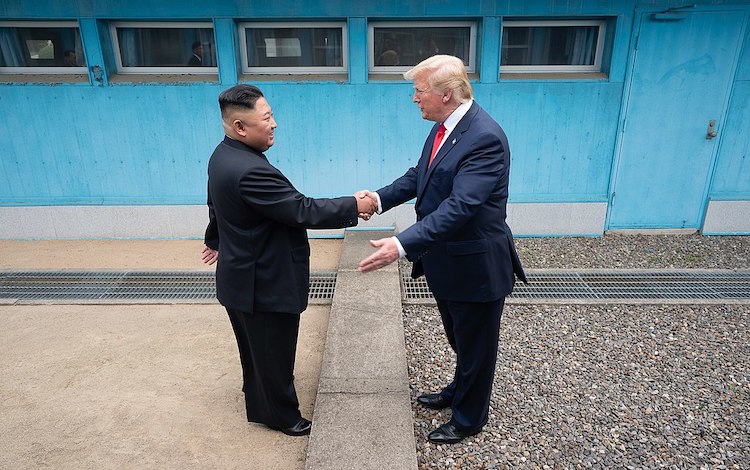Viewpoint by Kelsey Davenport

The author is director for nonproliferation policy at the Arms Control Association. This article is being reproduced from the Association’s Website.
WASHINGTON, DC (IDN| INPS) – U.S. President Donald Trump and North Korean Leader Kim Jong Un met at the demilitarized zone (DMZ) separating North and South Korea June 30 and agreed to restart negotiations on denuclearization and peacebuilding in the region. Trump was in South Korea for talks with President Moon Jae-in and had planned to visit the DMZ, but his invitation to Kim to meet at the border was publicly announced in a last-minute tweet June 28. [2019-07-03]
It is unclear if the impromptu meeting, which included Moon, will actually put negotiations back on track. Trump and Kim said their negotiating teams would meet in the next few weeks to resume talks, which have been stalled since the Hanoi summit in February but did not specify a date.
U.S. Secretary of State Mike Pompeo, who was present at the meeting, said the working-level meetings will likely begin in mid-July and expressed optimism for progress, noting that Kim “really wants to get something done, something very significant.” Pompeo said U.S. Special Representative for North Korea Stephen Biegun will continue leading the U.S. team. It is not clear yet who will head negotiations for North Korea or if the team will be empowered to discuss denuclearization in detail. Ahead of the Hanoi summit, the North Korean team had little latitude for negotiating on North Korea’s nuclear weapons program.
After meeting with Kim, Trump told reporters that “a lot of progress has been made” and that everything is now “extremely peaceful” and that “tremendous conflict and death” had ended.
While Trump described the negotiating process to date as a success, talks have yet to yield concrete steps toward verifiable dismantlement of North Korea’s nuclear weapons program, and over the past year, Pyongyang has continued to produce fissile material and expand its nuclear arsenal.
Kim said the meeting was a “courageous and determined act” by Trump and it “means that we want to bring an end to the unpleasant past and try to create a new future.”
After the Hanoi summit, it appeared that Kim was reassessing North Korea’s approach to the negotiations and looking for a face-saving gesture from the United States after he failed to secure sanctions relief during the Hanoi meeting. Trump’s last-minute invitation to meet with Kim at the border and then crossing into North Korea – a first for a sitting U.S. president – may have been the symbolic gesture Kim needed to agree to resume talks. Trump said that stepping into North Korea was “a great honor.”
North Korean state-run news agencies reported the meeting as “historic” and said the two sides agreed to pursue “productive dialogue to make a new breakthrough in the denuclearization of the Korean peninsula” and in the U.S.-North Korean relationship. The media also reported in North Korea that Trump and Kim discussed the concerns that were “an obstacle in resolving the issues.”
North Korea has specified that the U.S. refusal to put sanctions relief on the table earlier in the process is unacceptable and wants negotiations to proceed step-by-step.
The Trump administration’s approach through the Hanoi summit required agreement on the end state of denuclearization, before engaging in incremental steps toward verifiable denuclearization and peacebuilding.
The New York Times, however, is reporting that the administration is considering an adjustment in their approach, which may include accepting a freeze on North Korea’s nuclear program as an interim step toward a comprehensive deal. But Trump officials are split on whether to do so. [IDN-InDepthNews – 03 July 2019]
Photo: President Donald Trump shakes hands with North Korea’s Kim Jong Un on 30 June 2019, as the two leaders meet at the Korean Demilitarized Zone. (Official White House Photo by Shealah Craighead)
IDN is flagship agency of the International Press Syndicate.
facebook.com/IDN.GoingDeeper – twitter.com/nuke_abolition






